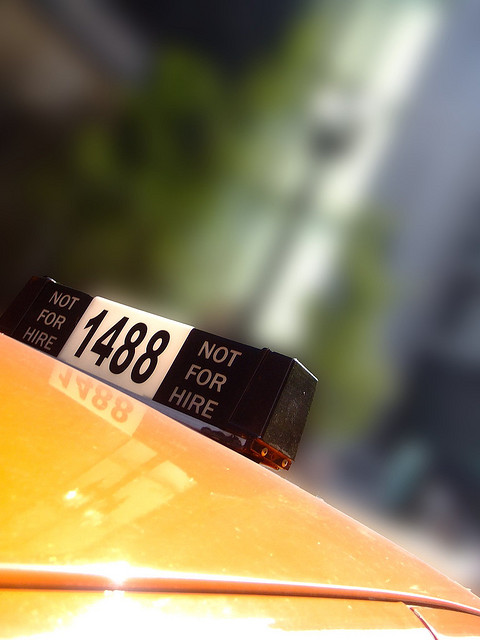Uber car service app makes winners and losers
By Odette Yousef

Uber car service app makes winners and losers
By Odette YousefThe obvious place to start here was to take an Uber ride. I used the app on my phone to summon a livery car to get me from the intersection of Orleans and Superior streets. My phone showed the car approaching in real-time on a map, and just before pulling up, the driver, Derrick Zielinksi, called to make sure he could identify me.
Zielinksi pulled up in a black SUV, typical style for a livery car. In Chicago, livery cars are public passenger vehicles for hire, much like cabs. The difference is livery cars have to prearrange their fares, and are not allowed to use meters, as cabs do.
Zielinksi contracts with a livery service for most of his calls, but in his downtime he takes additional calls through Uber.
“Today is slow, so I try to reach some customers, make some money,” he said.
Zielinski estimated he takes about twenty Uber calls each week.
Because Zielinski owns his vehicle, he pockets the full fare on those rides. That’s good extra income for him and other independent livery drivers who use Uber. Some in the taxi industry say that hasn’t gone unnoticed by Chicago’s cab drivers.
In Chicago, cabs typically get more fares than livery cars because they can take street hails, but they also work under more burdensome city rules. Few cab drivers own their cars — most of them lease. Cometas Dilanjian of City Service Taxi said Uber is blurring those distinctions between the industries by letting livery drivers pick up street hails electronically anytime.
“We’ve seen some people transition toward the black cars,” said Dilanjian, whose affiliation represents nearly 400 independent cab owners.
Dilanjian said he thinks Uber is drawing cab drivers into the livery business.
If true, that hurts his clients, the cab owners who lease their vehicles out to taxi drivers. When there are lots of drivers leasing cabs, those owners charge high fees. When the cabbie pool shrinks, they have to lower their fees. Dilanjian says it doesn’t have to shrink much to feel the effect.
“If that number is 100 or 200, then we definitely see some type of trend here,” Dilanjian said. “That’s a lot of drivers leaving.”

The city’s Department of Business Affairs and Consumer Protection attributes the increase to a recovery. According to department spokesman Jennifer Lipford, the total number of livery licenses in Chicago dropped nearly a quarter between 2008 and 2009 because of the economic downturn, and still hasn’t recovered.
But some taxi drivers like Shamim Chowdhury worry that jumping from cabs to livery could be risky. Chowdhury said the city could hold livery drivers liable for how Uber calculates fares. The company issues those drivers iPhones that track routes through GPS.
“That is kind of an illegal service, because on livery service you cannot charge a customer by the mileage,” Chowdhury said.
Chicago has issued a citation to Uber claiming that it illegally meters livery cars. Allen Penn, General Manager of Uber Chicago, said the company does calculate fares based on data captured from the phones, but said the method is different from metering.
The issue may be resolved soon enough. Chicago is considering new livery regulations that would more clearly prohibit Uber’s fare calculation method.
If adopted, that could mean a whole new shift in incentives for people in the industry.